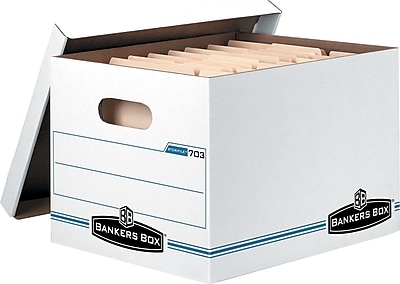What's up with Mr. Loukidelis?
18 Dec 2015
Ever feel like people are talking about you behind your back? Usually it’s just perfectly normal paranoia. But sometimes, they actually are. Maybe.
Backgrounder for those from abroad: Our provincial government was recently caught destroying public records by an Officer of the Legislature, who produced a detailed report with a dozen recommendations on how to stop breaking the law so much. But rather than simply implementing the recommendations, the Premier instead appointed her own smart important guy, David Loukidelis, to go over those recommendations and produce yet another set of This Time It’s For Real recommendations for her to take Very, Very Seriously. Mr. Loukidelis produced his recommendations on Wednesday, and the government said it would “accept them all” (for certain definitions of the words “all” and “accept”).

Anyways, I wasn’t even through reading the introduction to the Loukidelis report on the Denham report on government information access policy when I hit this line:
“Nonetheless, some observers have suggested in the wake of the investigation report that all emails should be kept.”
As far as I know, I’ve been the only “observer” to suggest that government emails should be archived and retained more-or-less in their entirety, as we expect Canadian financial institutions to do, and as the US government expects all public corporations to do. So I took this as a little bit of a throw down.
David Loukidelis wants to get it on! Is it on? Oh yes, it’s on, baby!
(This would be a good moment to go do something a lot more engaging, like picking lint out of your toes, or feeling that sensitive place at the back of your second left molar. I’m about to take apart Recommendation #2 of a 70 page report that, despite costing $50,000, is about as interesting as the last 70 pages of the phone book.)
Chapter 1: It’s too big!
After calling out us “observers”, Loukidelis then procedes to lay out his Luddite credentials in full, first by calculating the number of pages represented by the 43 terabytes of annual government emails:
“Using the above averages of emails received and sent, each year there would be roughly 426,000,000 pages of received emails and some 129,000,000 pages of sent emails, for a total of roughly 555,000,000 pages of emails. No one would suggest that all emails should be printed, but this gives a sense of the order-of-magnitude implications of the suggestions that, contrary to prudent information management principles, all emails should be kept, or should be vetted by others for retention. The same would be true even if these estimates were reduced by one or even two orders of magnitude, to 55,000,000 pages or 5,500,000 pages.”
Staggering! Shocking! Half a billion! I’m surprised he didn’t express it in terms of football fields to help the folks at home grasp the staggering immensity. (Because you need to know: 500M pages stack to about 700 football fields high.)
Let’s recast this problem in more computer-centric terms:
- The government produces/receives 43TB of email per year.
- A 4TB hard-drive can be purchased for between $200 and $400.
- So depending on the amount of redundency you want, and the quality of hard-drive you purchase, it’s possible to store the entire years worth of government email data on between $8,600 and $50,000 worth of hardware. Or, to put it in terms Mr. Loukidelis might understand, for about the cost of one overly wordy report.
Now I’m not suggesting the OCIO buy a dozen 4TB drives and stick a server in the closet, but the numbers above should reassure us that storing 44TB of email per year is not exactly at the far reaches of today’s computing capabilities. There are companies that provide cloud-based email archiving services, particularly for organizations with privacy issues and sensitive data (financial companies). In fact, one of the leaders in the field is headquartered right here in BC. I asked them if they could handle the government’s data volume.
@pwramsey Yes, we are capable of that. If you have any additional questions, feel free to reach out to info@globalrelay.net!
— Global Relay (@globalRelay) December 16, 2015So, we have the technology, we just lack the will.
Chapter 2: It’s not searchable!
Unfortunately, Mr. Loukedelis doesn’t stop trying to explain technology to the unwashed with his “pages of paper” analogy. He’s got yet more reasoning by analogy to share.
“At all costs, the provincial government should not entertain any notion that all electronic records must, regardless of their value, be retained. … To suggest, as some have, that all information should be kept is akin to suggesting it is good household management for homeowners to never throw away rotten food, grocery lists, old newspapers, broken toys or worn-out clothes. No one keeps their garbage. Hoarding is not healthy.”
Except of course, we aren’t talking about rotten food, grocery lists, old newspapers, and broken toys here. We’re talking about digital data, which can be sifted, filtered and analyzed in microseconds, without human effort of any kind. These are not differences in degree, these are differences in kind.
Mr. Loukedelis might be too young to remember this, but when Google introduced GMail in 2004, they did two remarkable things: they gave every user an unprecedented 1GB of free storage (that number is now 15GB); and, they hid the “delete” button in favor of an “archive” button. The archive button does not delete mails, it just removes them from the Inbox. Google served notice a decade ago: you don’t have to delete your mail, and you shouldn’t bother to delete your mail, because it’s too valuable as a record, and so very easy to search and find what you want.
I’m surprised Mr. Loukidelis, as a lawyer, isn’t following the progress of e-discovery technology, rapidly moving from keyword based searching to applying natural language and AI (well, statistical pattern recognition) tools to finding relevant documents in huge corpuses of electronic data.
Suffice it to say, it’s early days. Present technology is more than satisfactory to do a much better job than the poor old FOI clerks are doing searching mail boxes. And in the future, we can expect AI tools to easily sort through as much “garbage” as we care to throw at them.
The time to start archiving everything, and letting the computers sort out the mess, is now.
Chapter 3: It’s not relevant!
There’s one more vignette Mr. Loukedelis shares, a folksy thing, which is also worth looking at:
“This is true even if an individual engages in a transaction that generates records. Take the example of an individual who shops at an online store and arranges to pick up the television they buy at a bricks-and-mortar location. The order confirmation is emailed to them and they print it for pickup purposes. They cannot pick the television up within the allotted window, so they email the retailer to extend the time. The retailer responds. They then email the retailer about whether the television comes with an HDMI cable. The retailer responds. Once the television is picked up, the purchaser keeps the receipt for warranty purposes. This is surely the only documentation that truly matters. It would make no sense to keep all of the emails back and forth, or the printed pickup notice.”
Valueless! Cluttering up the important documentary record of government! If we had to store all this back-and-forth nonsense, we’d never be able to find the “good stuff” amongst the trash. Right?
What if the individual were picked up for a murder he didn’t commit, and his only alibi was that he sent an email from his desk to the television store, right when the act was committed? What if, after delivery, the individual opens the box and finds no HDMI cable! The store insists there isn’t supposed to be one. How can the individual prove otherwise? On and on it goes.
The most trivial pieces of information can have value, in the right circumstances. And since they cost practically nothing to store, why not keep them, particularly in light of the alternative Mr. Loukedelis proposes.
Chapter 4: What’s the alternative?
It’s important to weigh Mr. Loukidelis’ strong rejection of email archiving against the alternative, which is basically the current system.
- Most policy discussion and decisions are handled in email.
- That email may be discarded very easily by any staff member.
- Only if printed and filed will a permanent record be kept.
- If deleted, a copy in the trash folder may find its way to a backup file.
- Once deleted, FOI searches for the record will start to come up empty, as individual searches on staff computers don’t necessarily hit the trash folder.
- Also, FOI searches can only find the record if run on the right staff member’s computer (unlike with a government-wide archive).
- The copy in the backups will only be retrievable if HP Advanced Solutions restores the backup file (and if you think storing 44TB of data a year is expensive, compare it to having HPAS do really anything at all for you).
- The backups themselves will be purged after 13 months. At that point, the record is gone, forever.
On top of this system, Mr. Loukidelis proposes some sensible tweaks and improvements, but let’s be crystal clear: the current system sucks, it’s really collosally bad, and there’s no excuse for that in 2015.
Mr. Loukidelis should have proposed a real improvement, but instead he wiffed, and he wiffed hard.
Appendix A: Optional Conspiracy Theory Section
Mr. Loukidelis’ recommendation #2 is really striking, here it is:
“It is recommended in the strongest possible terms that government resist any notion that all emails should be kept”
Emphasis mine. Not just recommended, but “in the strongest possible terms”. None of the other recommendations is remotely so strong. And here’s an odd thing: the other recommendations are all addressed to Commissioner Denham’s original report, but Denham has nothing at all to say about archiving email. It’s like the topic was dropped into the Loukidelis report from out of the blue sky, and greeted by a phalanx of flame-throwers.
Why? What’s going on? Why spend so much ink, and such strong language, to kill an idea that Denham didn’t even recommend?
I find it hard to believe that Loukidelis really cared that much about “observers” like me and my blog. Yet he cared enough to not only put in a section about email archiving, but also to beat the topic to death with a shovel.
I think there must have been some internal debate in government about permanently ending the controversy over bad email management by adopting an email archive. And Loukidelis was instructed by political staff on one side of that debate to ensure that the idea was terminated with dispatch.
Maybe Finance Minister Mike “Mr Transparency” de Jong made an email archive a personal hobby-horse and started talking it up in cabinet. If so, having the Loukidelis report kill the idea dead would be a quick and dirty way for the Premier to make sure the discussion went no further.
Regardless, I think there’s probably an interesting story behind recommendation #2, and I hope someday I get to hear what it was.





 … I’m going to tear my ears off. Also “transitory email”. Just bam, going to rip them right off.
… I’m going to tear my ears off. Also “transitory email”. Just bam, going to rip them right off. Oh, yes, digital documents cost money to store, but please note, my old CD collection (already a very information dense media) takes up a 2-cube box in my garage, but barely dents the storage capacity of an $10 memory stick in MP3 form. My book collection (6 shelves) hardly even registers in digital form. You use more data streaming an episode of Breaking Bad. Things have changed since 1995. And since 2005.
Oh, yes, digital documents cost money to store, but please note, my old CD collection (already a very information dense media) takes up a 2-cube box in my garage, but barely dents the storage capacity of an $10 memory stick in MP3 form. My book collection (6 shelves) hardly even registers in digital form. You use more data streaming an episode of Breaking Bad. Things have changed since 1995. And since 2005.
